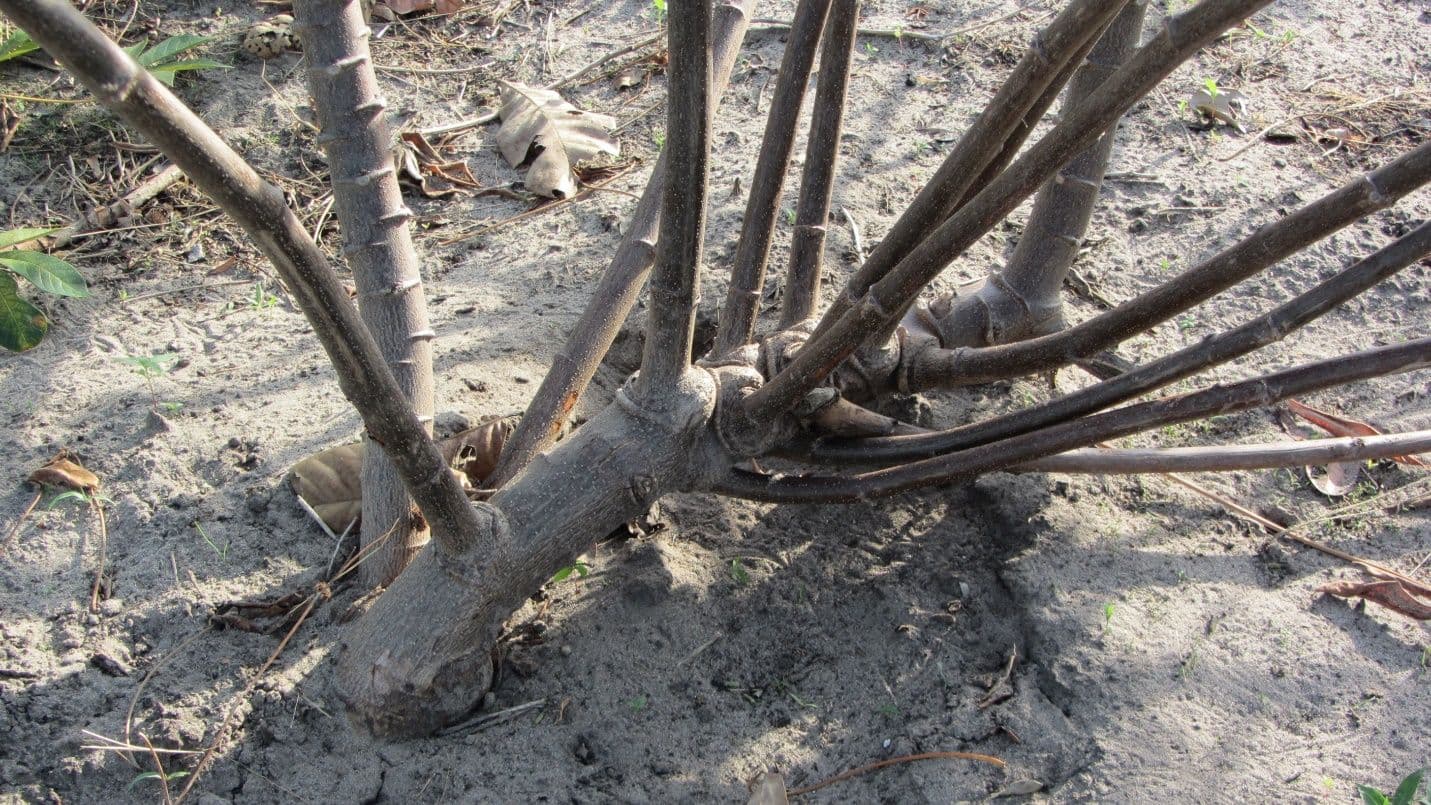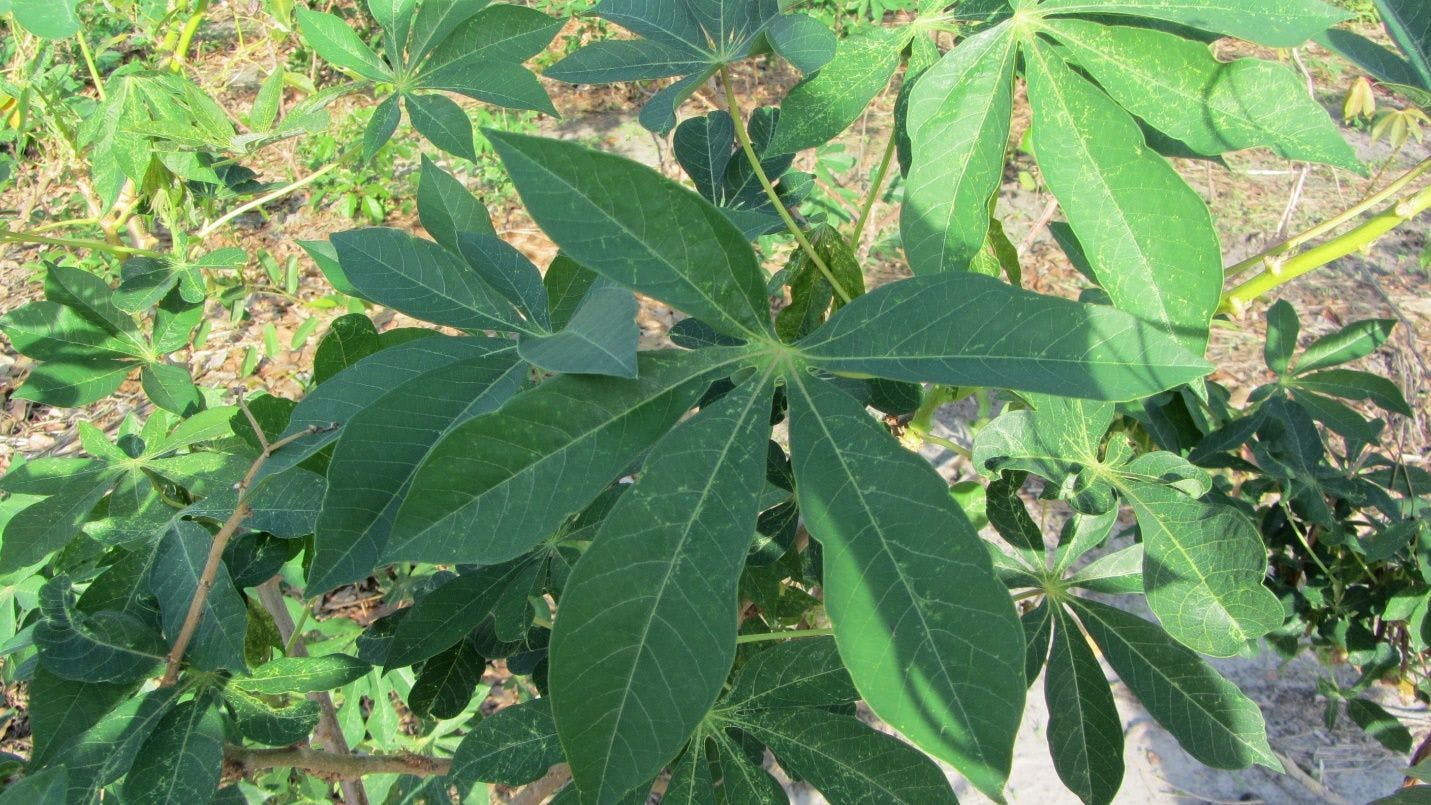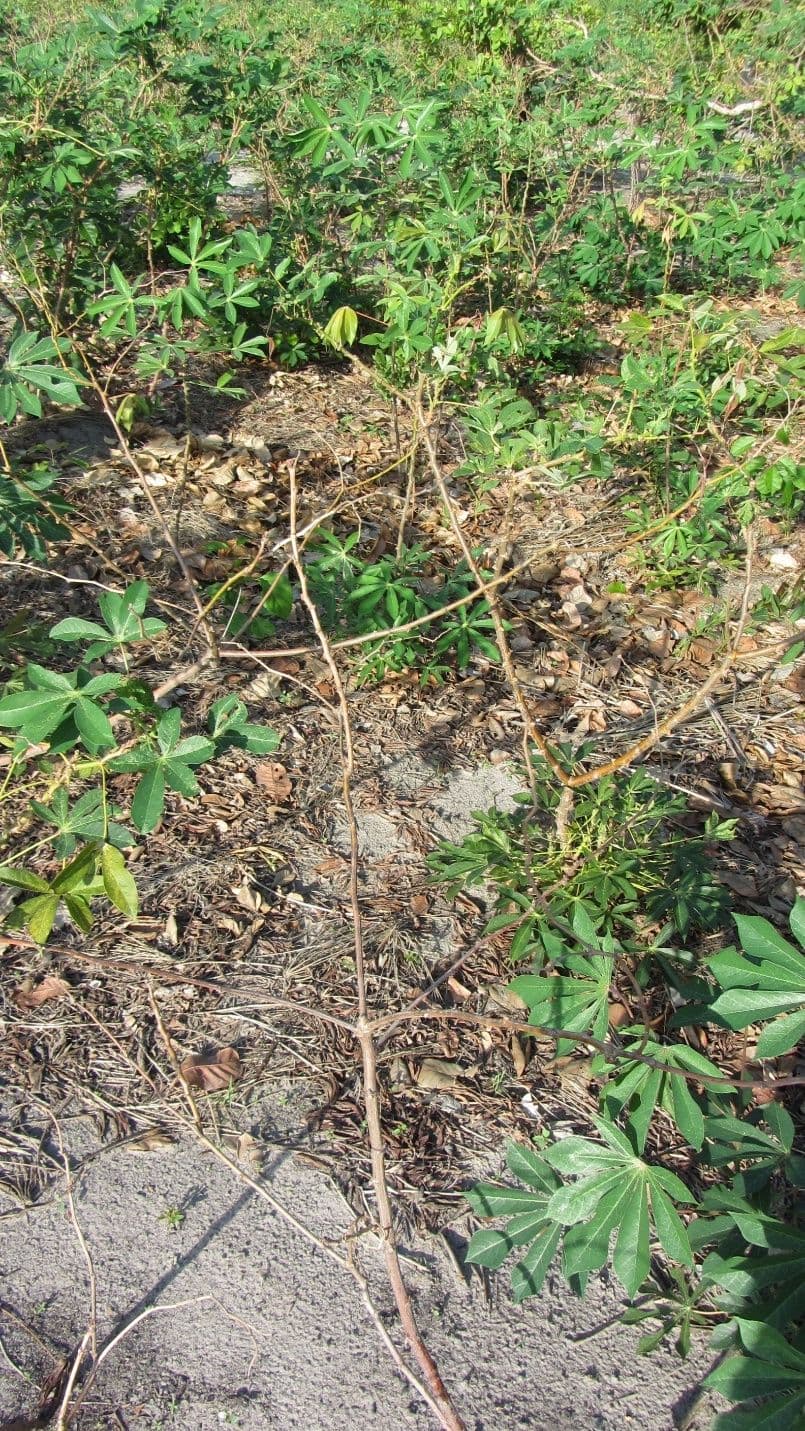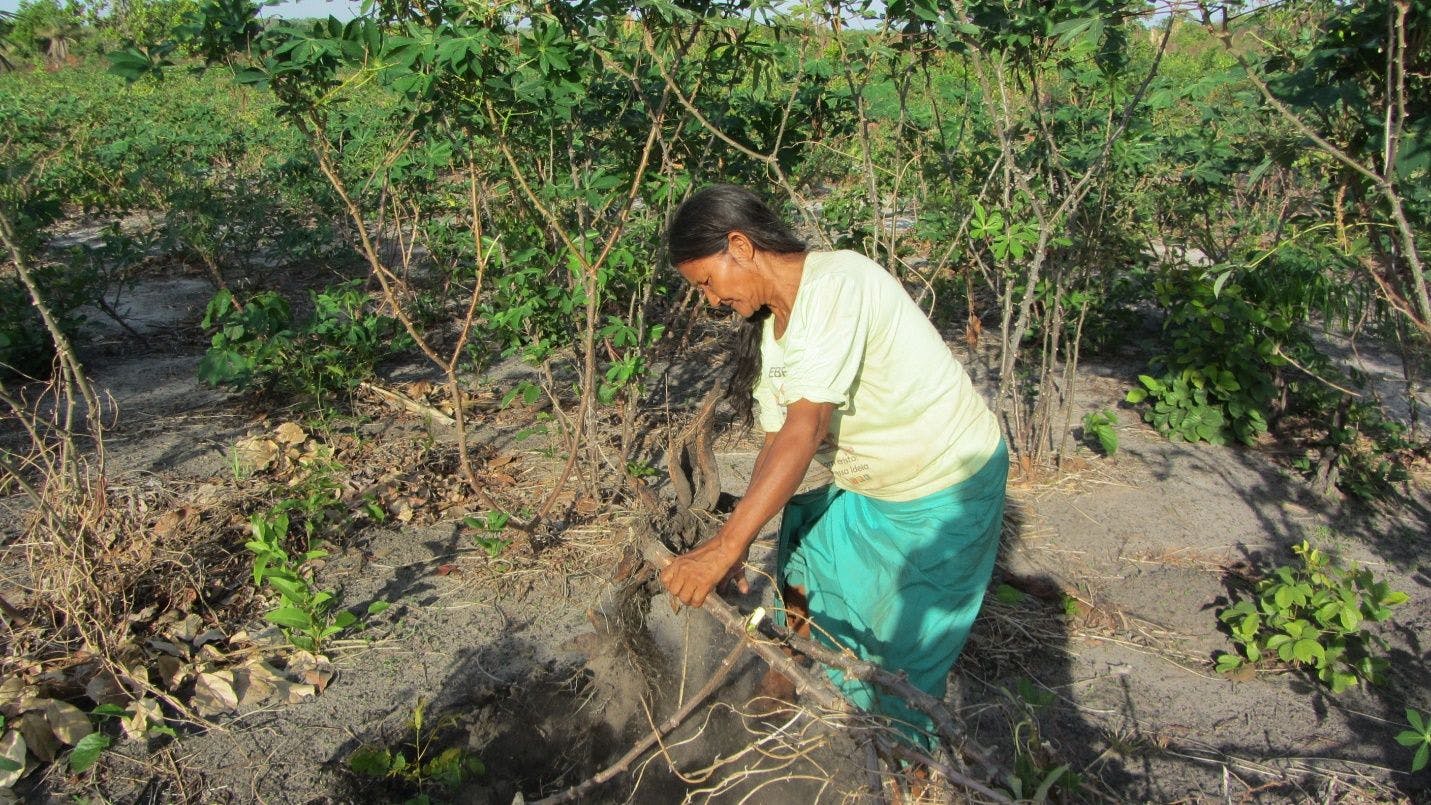There are many ways of understanding human-plant engagements – as markers of socio-cultural relations, as encoding traditional ecological knowledge, as archival records of past and present human landscape modifications, and as multispecies assemblages, among others. Recently, a number of scholars have taken up the multispecies approach of understanding plants from their own perspectives, bearing in mind the distinct sensory capacities of humans and plants (Hartigan 2017). Plant behavioral ecology is also exploring the sensory capacities of plants, including their communicative engagements within and across plant species (Gagliano 2015; Gagliano and Grimonprez 2015), raising the possibility of deepening our understanding of communication between plants and people. Yet, what are other ways of getting to know our plant friends, lovers, and kin (Miller 2019)? What has recently struck me in my research in Indigenous1 lowland South America is the gendered aspects of human-plant engagements, and more so the gender fluidity that can be seen in human-plant engagements.
It is well-known that Indigenous communities worldwide have developed sophisticated ways of understanding and embracing gender fluidity beyond the male/female dualism most often found in Western societal formations. From Two-Spirit Native American and First Nations community members in North America (Hunt 2018; Driskill 2004, 2010), to five genders or gender holism among the Bugis of Sulawesi, Indonesia (Graham Davies 2006, 2007), Indigenous communities have long traditions of recognising multiple genders, and they continue to push the boundaries of gender dualism typically enforced by colonial and post-colonial societies. In Indigenous lowland South America, recent explorations into gender fluidity and how gender identity has been profoundly shaped by colonial and post-colonial processes are providing new and important ways of understanding intersectionality in these increasingly-fragmented political landscapes and communities (see Fernandes and Arisi 2017; Sacchi and Gramkow eds. 2012).
Here, I bring a multispecies approach to the discussion about Indigenous gender fluidity, focusing on Indigenous Canela people-plant relationships in the northeastern Brazilian Cerrado or savannah – abiome that is increasingly threatened by deforestation for industrial soy agriculture and is bearing the brunt of climatic and environmental changes in the country (Lapola et al. 2014; Machado Filho et al. 2016; Strassburg et al. 2017). The Indigenous Canela people here engage with native and introduced plants as children in need of care and affection. Plants are multispecies kin, integral to the survival and well-being of the Canela life-world. People develop loving, affectionate relationships with plant kin through multi-sensory embodied interactions throughout their lives.
In this multispecies life-world, all beings, including humans, plants, animals, and supernatural entities, are assigned genders, which are typically understood through the binary dualism of male and female. Women and men are each responsible for gardening activities specific to their gender, and teach younger generations through a gendered education of affection for plant kin. For example, the supernatural master spirits of plants are gendered along binary lines, with a Plant-Man and Plant-Woman corresponding to each of the 266 cultivated crop varieties (belonging to at least 45 species). Physical spaces in the life-world are gendered too, with the concentric circular village divided into the male socio-political ceremonial centre and the female domestic space of the outer rings of houses.
These gendered conceptual dualisms are common among Jê-speaking communities such as the Canela, (see Maybury-Lewis ed. 1979). Yet Jê conceptual dualisms can also form triads (Lévi-Strauss 1963; Crocker 1990; Ewart 2013). Jê life-worlds are highly transformational and include many binary and triadic conceptual formations. Indeed, many Canela dualisms become triadic formations: for example, the dualistic village forms a spatial triad with the riverbank and forest gardens, themselves another complementary dualistic pair.
Gender, too, has triadic formations for both plants and people. The staple crop of manioc (Manihot esculenta Crantz) is categorized into three genders: the female sweet manioc (kwỳrỳre in Canela; macaxeira in Portuguese), the male bitter manioc (kwỳr; mandioca), and two types of “in-between” gendered half-sweet/half-bitter manioc not-bitter manioc (kwỳr xenti) and hugging-vine manioc (waíputre).The half-sweet/half-bitter types have the same “feminine” characteristics that sweet manioc varieties have – they are soft, sweet, gentle, and are impej, meaning that which is true, original, good, and beautiful. Conversely, bitter manioc varieties are brave, strong, aggressive, and ihkên, meaning that which is bad, ugly, false, and less original.

These three categories are also distinguished by the levels of the toxic cyanogenic glucosides found in manioc roots that necessitate extensive processing before consumption (see Rival and McKey 2008; Wilson and Dufour 2002). Bitter manioc has the highest levels of toxicity, sweet manioc the lowest (and does not require processing), and the two gender non-binary manioc varieties have “in-between” levels and are said to require minimal processing2. In this way, the in-between gendered types of manioc have masculine characteristics as well, since toxicity is linked to the plant being “brave” and similar to a Canela warrior, able to kill an animal who eats its toxic roots. Additionally, the in-between manioc varieties have long and thick roots, similar to masculine bitter manioc. Taking on both feminine and masculine attributes, the in-between gendered half-sweet/half-bitter manioc varieties hold a special place in Canela plant categorization. Hugging vine manioc in particular is known for being the “most aboriginal” type of manioc and for being “stronger” than all other varieties with its thick roots, and it can remain growing in the ground for up to five years (while the typical maturation period is 7-12 months). Due to its strength, the gender non-binary hugging vine manioc is sometimes referred to as the “chief” of all manioc varieties, responsible for the well-being of the entire crop. Distinguished for their femininity and masculinity, the in-between gender manioc, and especially waíputre, are valued and appreciated in the Canela life-world.
While Canela people are also known to occupy gender non-binary categories, their space in the Canela life-world is much more contested than gender non-binary plants. It is unusual for people in the modern-day Canela life-world to identify as other than male or female (although it is unclear whether multiple gender categories for people were more common in the past, before Euro-Brazilian colonization of the Canela in the early 19th century). There are at least two cases in recent memory of gender non-binary or transgender people who were born male, known as mam hũmre hapuhna cahãj in Canela, which literally translates into “man who transformed into a woman.” There is only one known case of a person who was born female and attempted to transition, yet they were not accepted by the Canela male leadership council. The person was ordered by the council to stop behaving and dressing “like a man,” including singing in the exclusively-male ceremonial centre, thereby highlighting the gender inequality of Canela socio-political and ritual life3.
One of the mam hũmre hapuhna cahãj who transitioned was Dirceu4, an expert shaman who served in the Brazilian military in their youth. While Dirceu married a woman and had children with her, as a young person they also are said to have “laid with” men. As a shaman, Dirceu communicated with plants, plant-derived household objects, and the male and female gendered Plant-People master spirits. While female shamans do exist, the majority of shamans are male, and Dirceu developed their shamanic abilities from a male perspective. Dirceu interacted with Plant-Men master spirits in ways akin to male formal friendship (hapĩn), and they were seduced by the Plant-Women, who acted as types of other-wives (_m_ẽ prõ-nõ) to the shaman (see Miller 2019: 199-208).
As an older person, Dirceu began to adopt female attire and bodily mannerisms, and engaged in traditionally female activities. Dirceu adopted the “law of women,” as their granddaughter Liliana explained to me. This meant dressing in a cloth skirt (pano) and squatting or sitting as Canela women do, undertaking household chores, and especially becoming involved in women’s caretaking gardening activities of tending, weeding, and singing ritually to growing plant children, as well as saving seed and plant cuttings that are considered infants. Dirceu’s transition was directly tied to their engagements with cultivated plants. As Dirceu gently rubbed oils on seed infants to store them, visited the garden spaces to tend to the hanging vines of growing squash, bean, yam, and sweet potato children, and sang ritual gardening songs to the masculine, feminine, and in-between gendered manioc, they were able to transition into a non-binary gendered position in the Canela life-world.

Indeed, the caretaking of plants – including caring for gendered plant children, and the three genders of manioc – enabled Dirceu’s transition more than other activities. It is interesting to consider the possibilities of Dirceu’s engagements with hugging vine manioc, both as gender non-conforming subjects in the Canela life-world. With their shamanic abilities, perhaps Dirceu was able to communicate with hugging vine manioc and relate to its distinct subjective position as a gender non-binary plant with masculine and feminine characteristics. As an elderly trans person, Dirceu was known for their seed and plant caretaking expertise and passed on their seeds, cuttings, and gardening knowledge to younger generations. Liliana fondly saves and grows the seed and plant cutting infants Dirceu gave to her, and remembers her trans grandparent’s expert abilities to care for and love plant children.
It appears that Dirceu was gender non-conforming their entire life, yet only through gardening were they able to find the space to transition Dirceu’s genderqueer gardening is an example of how people-plant engagements can push the boundaries of gender and recognize its fluidity. Furthermore, it allows us to re-think critical questions in environmental justice, political ecological, and intersectional frameworks. What it means for an Indigenous trans person to take up and excel at gardening and plant caretaking in a biome threatened by climate change and environmental destruction is crucial to understanding Indigenous socio-ecological resilience and resistance to centuries of structural violence.
Moreover, Dirceu’s engagements with their plant children makes us consider the possibilities of intersectional multispecies ethnographies, that truly take into account the diverse identities that people and plants have and develop over time – identities that are socio-cultural, socio-political, cosmological, and ecological. Dirceu developed multiple identities over the course of their life – including spouse to a woman, lover to men, army recruit, expert shaman, and finally, expert trans gardener who developed intimate, gendered engagements with plants that were respected and admired by their family and community. Plants too have multiple identities. Hugging vine manioc, for example, is a plant with a unique ecological and biological profile, able to remain growing for years and with in-between toxicity levels; is gender non-binary and a chief in relation to other manioc types; is a plant child to gardener parents; is a friend to shamans; and is mastered and represented to the shaman by male and female Plant-People master spirits, further complicating the plant’s gender identity. These human and plant identities are simultaneously symbolic and material, and deeply inform bodily engagements between and among species.

What would an intersectional multispecies ethnography of people and plants look like? It would be a radical political step as well as a scholarly exercise, to take seriously the importance of intersectionality from a multispecies perspective. An intersectional multispecies ethnography of people and plants would recognize and take seriously the embodied aspects of human and plant identities as they develop and take shape over time and in diverse life-worlds. Moreover, it would recognize that human-plant engagements are multi-faceted, diverse, and political, often radical acts – of enabling trans people to make their place in the life-world alongside gender non-binary plants, as is the case of Dirceu among the Indigenous Canela; of enabling multispecies love (Archambault 2016; Miller 2019); of engendering healing and growth of people and plants (Jepson 2014) – the list goes on.
In these times, diverse Indigenous peoples – including women, trans, Two-Spirit, other gender non-binary people, and men – and their landscapes –including plant and other nonhuman kin – are under attack by extractive and agricultural industries, mega-development projects, rollbacks of government protections and territorial rights, and violence towards the people and the land with impunity (e.g. Instituto Socioambiental 2018). Indigenous peoples also have territorial rights to and influence land management of around one-quarter (28.1%) of the world’s land surface (Garnett et al. 2018) and have deep traditions of sustainably managing their landscapes, made of up of their plant kin, friends, and lovers, among other nonhuman beings. Intersectional multispecies ethnographies of Indigenous life-worlds, therefore, are exactly the kind of academic-political projects that scholars of human-plant relationships need to undertake in order to better understand these complex and sophisticated human-environment engagements and safeguard them for the future.
References
- Archambault, Julie Soleil. 2016. Taking Love Seriously in Human–Plant Relations in Mozambique: Toward an Anthropology of Affective Encounters. Cultural Anthropology 31(2):244–271.
- Fernandes, Estevão R. and Barbara M. Arisi. 2017. Gay Indians in Brazil: Untold Stories of the Colonization of Indigenous Sexualities. New York: Springer International Publishing.
- Gagliano, Monica. 2015. In a Green Frame of Mind: Perspectives on the Behavioral Ecology and Cognitive Nature of Plants. AoB PLANTS 7:plu075.
- Gagliano, Monica and Mavra Grimonprez. 2015. Breaking the Silence: Language and the Making of Meaning in Plants. Ecopsychology 7(3):145–151.
- Garnett, Stephen T. Garnett, Neil D. Burgess, John E. Fa, Álvaro Fernández-Llamazares, Zsolt Molnár, Cathy J. Robinson, James E. M. Watson, Kerstin K. Zander, Beau Austin, Eduardo S. Brondizio, Neil French Collier, Tom Duncan, Erle Ellis, Hayley Geyle, Micha V. Jackson,Harry Jonas, Pernilla Malmer, Ben McGowan, Amphone Sivongxay and Ian Leiper. 2018. A Spatial Overview of the Global Importance of Indigenous Lands for Conservation. Nature: Sustainability 1 369–374.
- Graham Davies, Sharyn. 2007. Challenging Gender Norms: Five Genders Among Bugis in Indonesia. Belmont, CA: Wadsworth Cengage Learning.
- Hartigan, John. 2017. Care of the Species: Races of Corn and the Science of Plant Biodiversity. Minneapolis, MN: University of Minnesota Press.
- Hunt, Sarah. 2018. Embodying Self-Determination: Beyond the Gender Binary. In Margo Greenwood, Sarah de Leeuw, and Nicole Marie Lindsay (eds.), Determinants of Indigenous Peoples’ Health: Beyond the Social. Pp. 22-39. 2nd edition. Toronto: CPS Books Inc.
- Instituto Socioambiental. 2018. Cacique Jorginho Guajajara é assassinado no Maranhão. 14 August 2018.
- Jepson, Anne. 2014. Gardening and Well-Being: A View from the Ground. In Elizabeth Hallam and Tim Ingold (eds.), Making and Growing: Anthropological Studies of Organisms and Artefacts. Pp. 147–162. Farnham, UK: Ashgate.
- Machado Filho, Haroldo, Cássia Moraes, Paula Bennati, Renato de Aragão Rodrigues, Marcela Guilles, Pedro Rocha, Amanda Lima, and Isadora Vasconcelos. 2016. Mudança do Clima e os Impactos na Agricultura Familiar no Norte e Nordeste do Brasil. Working Paper No. 141 do Centro Internacional de Políticas para o Crescimento Inclusivo (IPC-IG). United Nations Development Program.
- Miller, Theresa L. 2019. Plant Kin: A Multispecies Ethnography in Indigenous Brazil. Austin, TX: University of Texas Press.
- Native American Journalists Association. Style Guide.
- Rival, Laura and Doyle McKey. 2008. Domestication and Diversity in Manioc (Manihot esculenta Crantz ssp. esculenta, Euphorbiaceae). Current Anthropology 49(6):1119-28.
- Sacchi, Ângela and Márcia Maria Gramkow (eds.) 2012. Gênero e Povos Indígenas: Coletânea de Textos Produzidos para o "Fazendo Gênero 9" e para a "27ª Reunião Brasileira de Antropologia". Rio de Janeiro, Brasília: Museu do Índio/ GIZ / FUNAI.
- Simeone, Tonina. 2015. Indigenous Peoples: Terminology and Identity. Hillnotes: Research and Analysis from Canada’s Library of Parliament.
- Strassburg, Bernardo B. N., Thomas Brooks, Rafael Feltran-Barbieri, Alvaro Iribarrem, Renato Crouzeilles, Rafael Loyola, Agnieszka E. Latawiec, Francisco J. B. Oliveira Filho, Carlos A. de M. Scaramuzza, Fabio R. Scarano, Britaldo Soares-Filho, and Andrew Balmford. 2017. Moment of Truth for the Cerrado Hotspot. Nature: Ecology and Evolution 1:0099.
- Wilson, W.M., and D.L. Dufour. 2002. Why “Bitter” Cassava? Productivity of “Bitter” and “Sweet” Cassava in a Tukanoan Indian Settlement in the Northwest Amazon. Economic Botany 56(1):49-57.
Footnotes
-
Indigenous is capitalized throughout to recognize the agency of Indigenous peoples and following the recommendations of First Nations and Native American communities to capitalize terminology to respect and recognize Indigenous peoples’ political representation and socio-cultural identities worldwide (see Native American Journalists’ Association; Simeone 2015). ↩
-
The tapioca of hugging vine manioc is considered poisonous yet the pulp is not, and the pulp of not-bitter manioc is said to have a small amount of poison that requires minimal processing prior to consumption. ↩
-
While women own the houses and gardens in this matrilocal community, men exclusively lead socio-political and ritual affairs, and women are prohibited from attending the daily political meetings held in the ceremonial village center. This person’s attempted transition clearly threatened male daily life. In this case, the person went back to dressing and acting like a Canela woman, although it is possible they still considered themselves trans despite their rejection by the leadership council. ↩
-
Canela names have been changed throughout. ↩
